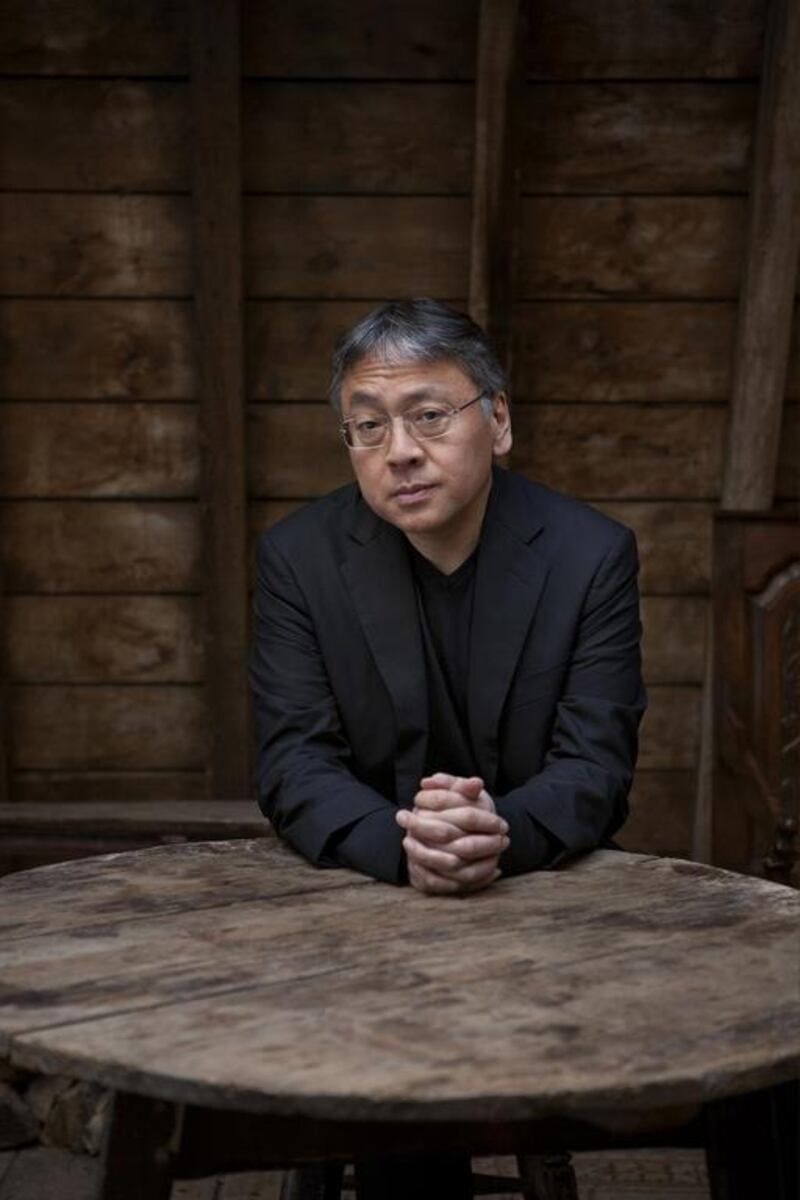Kazuo Ishiguro’s extraordinary career could be summed up by that old French saying: the more things change, the more they stay the same. Over the past 30 years, his diverse stories have included elderly Japanese painters reviewing their lives, repressed English butlers having their belief systems shattered, and dystopian novels about friendship, time and organ harvesting. But no matter the subject, there are constants of theme (memory, isolation, cultural dislocation, love’s shocks and consolations) and tone: the stately clarity of Ishiguro’s prose that can insinuate profound feeling.
It is therefore suitably surprising, and somehow inevitable, that The Buried Giant opens in a far-distant England suspended between the Roman conquest and the final conflicts between the Britons and the Saxons. Even more unsettling, especially to fans of The Remains of the Day, are the hints of fantasy as practised by those initialised superstars J R R Tolkien and George R R Martin: "Icy fogs hung over rivers and marshes, serving all too well the ogres that were then still native to this land."
Ogres?! Whatever next? A dragon? Well, as a matter of fact, yes, but we’ll have to wait for the second half for our cut-price Smaug. Countering these raised eyebrows is our narrator’s soothing tones. “But such monsters were not cause for astonishment,” he assures the reader, attempting to make this land of terrifying monsters seem as commonplace as a modern hedgerow.
Doubtless the well-read Ishiguro is thinking less of The Hobbit and more of medieval romances like Gawain and the Green Knight. One clue is an appearance by Gawain himself, the last Arthurian Knight, who turns up, older, unwiser and a little doddery – like Don Quixote on holiday from Cervantes' Spain.
But there are broader echoes, not least the quest narrative that shapes much of Ishiguro’s novel. The first is undertaken by Axl and Beatrice, ageing, likeable Britons who leave an unsatisfying village life on a perilous search for their son, who they believe is waiting anxiously for them. Beatrice leads the way, not out of feminist bravery but because Axl knows attacks tend to come from behind. So begins a touching refrain in which Beatrice asks whether her husband is present, and Axl replies gently: “Still here, princess.”
Their call and response attests to touching tendresse but also a plague afflicting the populace with collective memory loss. Beatrice, in Stephen King mode, calls this “The Mist”. When the past appears at all, it is in confounding fragments so that no two people can agree on a single event.
These perspectives swiftly multiply. First we meet Wistan, a fearsome warrior who rescues a young man called Edwin from a pack of ogres. Then we encounter Sir Gawain, whose chivalric duty to hunt the dragon Querig has occupied much of his adult life.
The mood of uncertainty creates a weird narrative friction as a seemingly concrete linear present begins to look more and more unstable. This owes less to overt drama, though there are some vigorous action sequences, than questions of identity. Do the flashes Axl receives of his warlike past suggest a man at odds with his rather kindly demeanour? Are the intimations of quarrels with his wife and son signs of a less peaceful family history? Why has Gawain taken so long chasing the dragon? And what exactly is all this amnesia hiding?
The obliviousness feels symbolic of a land riven by warring tribes, competing philosophies and shared trauma. Rome is glimpsed in ruins, and overt friction exists between Christian Britons and pagan Saxons. But deeper cultural shifts are also in evidence: for example in the conception of “romance”. For Gawain, this represents a courtly code of duty and idealised love in which personal satisfaction is sacrificed to a greater cause. But such honour looks suddenly dated compared to Axl and Beatrice, whose intimate if unstable relationship elevates romantic passion (for a partner or a son) over more rarefied principles.
Here is history as battles, politics and ideas, but also a transition in feeling. In this, The Buried Giant explores classic Ishigurian tensions between intellect and emotion, between what we think (or feel) we know and how the world actually works. The final scene crystallises this in a mediation on death, and how this quickens our sense of what truly matters – whether this is a dragon, a cause or another person. It is elegantly and poignantly done, but Ishiguro's care sacrifices some of the raw emotion that made Never Let Me Go's stark epiphanies so heartbreaking. The late revelations about Axl and Beatrice's past don't quite break the feeling that they are walking, talking symbols rather than flesh and blood characters. The head seems to win over heart, but I'm not altogether sure that's what Ishiguro wanted.
The novel can be bought from Amazon
James Kidd is a freelance reviewer based in London.
[ thereview@thenational.ae ]





